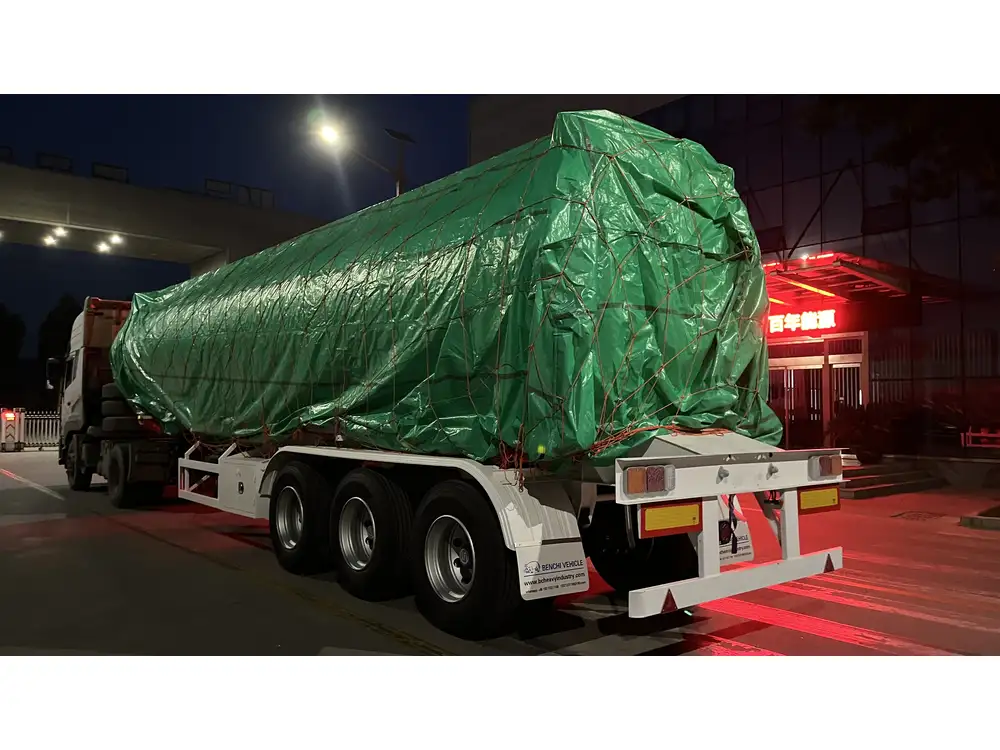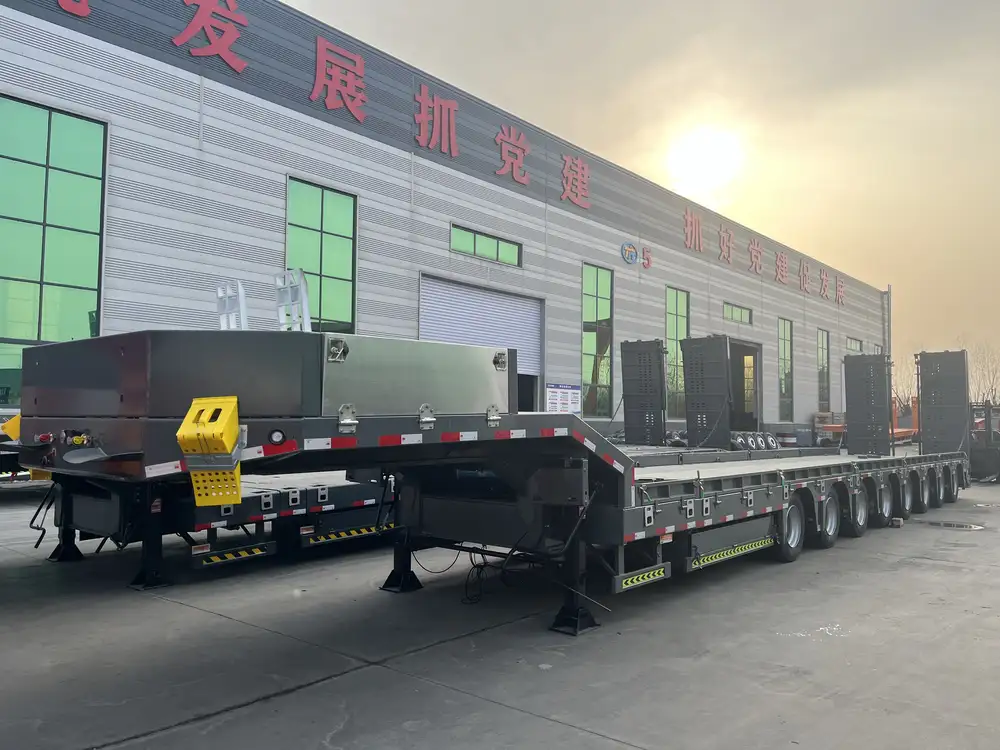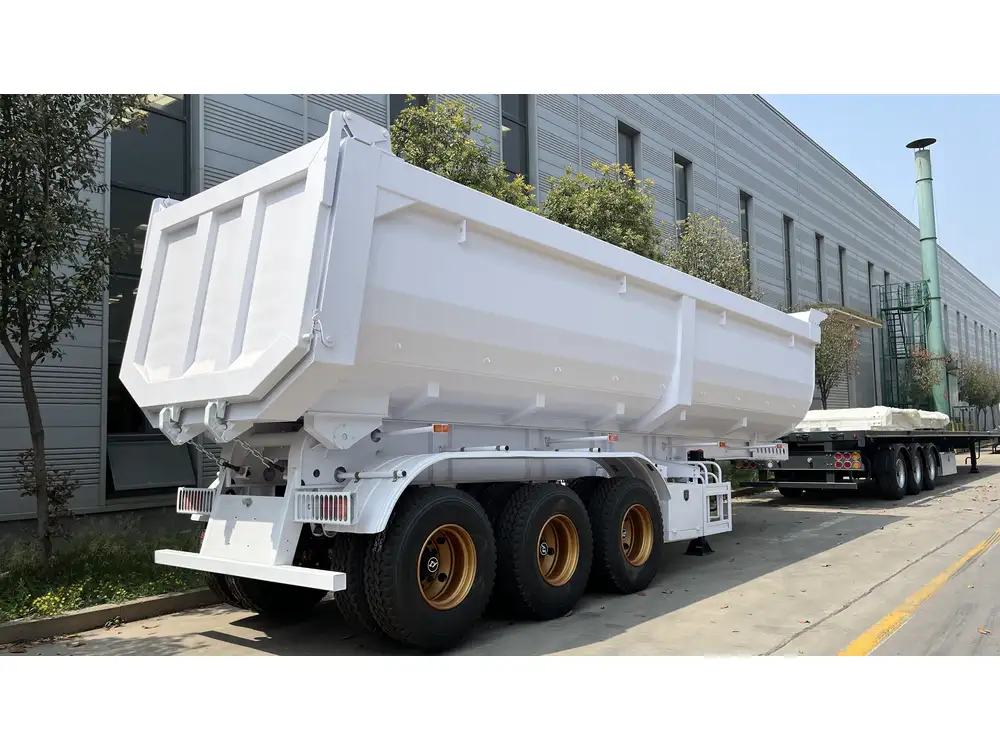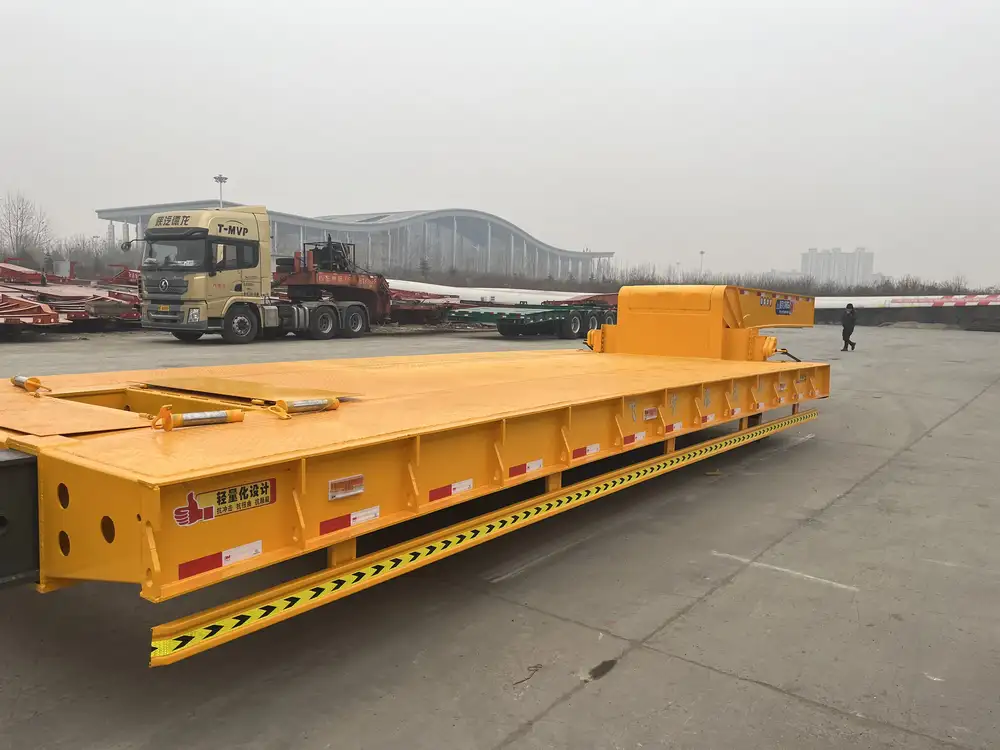When it comes to logistics and transportation, the choice of trailer can significantly influence efficiency, cost, and overall operational effectiveness. Among the many options available, the 28-foot semi-trailer stands out, particularly within the realm of less-than-truckload (LTL) freight and other regional delivery services. In this article, we will delve into the specific dimensions, features, and considerations regarding 28-foot semi-trailers, arming you with valuable insights that are both practical and essential for making informed decisions in freight transportation.
Key Dimensions of a 28-Foot Semi-Trailer
Understanding the exact dimensions of a 28-foot semi-trailer is crucial for effective planning and usage. Here’s a breakdown of typical measurements:
| Dimension | Measurement |
|---|---|
| Overall Length | 28 feet (about 8.53 meters) |
| Width | 96 inches (about 2.44 meters) |
| Height | 13.5 feet (approximately 4.1 meters) |
| Payload Capacity | 14,000 – 26,000 pounds (variable) |
| Interior Flooring Length | 26 – 27 feet (depends on configuration) |
| Interior Width | 92-96 inches |
| Interior Height | 110 – 120 inches |
Length, Width, and Height
To begin with, the overall length of 28 feet is the most defining dimension. This specific measurement allows for an efficient balance between load capacity and maneuverability in urban settings where accessibility can be challenging.
The width of 96 inches creates enough space to accommodate a variety of cargo types. The height, typically around 13.5 feet, ensures ample vertical space for transporting taller goods while still remaining compliant with road regulations in most jurisdictions.

Payload Capacity
The payload capacity of a 28-foot semi-trailer can vary significantly based on its specific configuration, axle formulation, and materials. Generally, they can carry loads ranging from 14,000 to 26,000 pounds. This flexibility means businesses can select trailers that best suit their specific freight requirements.
Interior Dimensions
The interior dimensions provide additional insights into functionality. With an interior length of 26 to 27 feet, a width varying from 92 to 96 inches, and a height between 110 and 120 inches, these trailers are designed to maximize usable space.
Cargo Types Suited for 28-Foot Semi-Trailers
One of the key factors to consider when selecting a semi-trailer is the type of cargo it needs to transport. The 28-foot semi-trailer is versatile and well-suited for a myriad of applications, including:
- General Freight: Ideal for dry goods, consumer products, and packaged items.
- Furniture Transport: Ample space allows for packing multiple pieces efficiently.
- Electronics: The interior height accommodates larger items while ensuring safe transport.
- Automotive Parts: Perfect for delivering components in bulk to manufacturers or retailers.

Comparison with Other Trailer Sizes
| Trailer Size | Length (feet) | Width (inches) | Payload Capacity (lbs) | Ideal Use Case |
|---|---|---|---|---|
| 28-Foot Semi-Trailer | 28 | 96 | 14,000 – 26,000 | Regional LTL, general freight |
| 53-Foot Semi-Trailer | 53 | 102 | 45,000 – 65,000 | Long-haul freight |
| 20-Foot Container | 20 | 8 | 20,000 – 21,000 | International shipping |
The choice between a 28-foot and other trailer types should be informed by the nature and volume of the cargo you plan to transport, as well as the routes you intend to take.
Pros and Cons of Using a 28-Foot Semi-Trailer
Pros:
- Maneuverability: Easier to navigate in urban settings than larger trailers.
- Versatility: Suited for various cargo types, making it great for businesses with diverse needs.
- Cost-Effectiveness: Generally lower costs for regional transportation compared to larger equipment.

Cons:
- Limited Capacity: Not suitable for bulk freight or large volume shipments.
- Space Limitations: While good for many goods, larger items may not fit comfortably.
Legal Considerations and Regulations
When operating a 28-foot semi-trailer, it’s imperative to be cognizant of relevant regulations:
Weight Limits
Different states have varying weight restrictions for trucks on highways. Ensure that the combined weight of your trailer and cargo does not exceed these limits to avoid fines and legal complications.

Dimensions and Routes
Certain routes may also have restrictions based on bridge heights and road widths, which can influence your transportation planning. Staying compliant with local laws ensures that your operational efficiency remains unhindered.
Licensing Requirements
Operators of semi-trailers typically require a commercial driver’s license (CDL), and there may also be specific endorsements necessary depending on the type of cargo being transported. Ensure that your workforce is properly licensed and trained.
Enhancing Your Semi-Trailer Experience

Customization Options
One of the significant advantages of 28-foot semi-trailers is their potential for customization. Businesses can enhance the functionality of their trailers by considering the following options:
- Reinforced Flooring: For heavy-duty loads.
- Temperature Control Systems: Ideal for sensitive cargo like food and pharmaceuticals.
- Rear Loading Ramps: Facilitates easier loading and unloading of goods.
Maintenance Best Practices
Regular maintenance not only extends the life of your semi-trailer but also ensures safety. Here are some vital maintenance tips to consider:
- Regular Inspections: Conduct routine checks on brakes, tires, and lighting systems.
- Cleaning: Regularly clean the interior and exterior to prevent rust and degradation.
- Tire Rotation: Ensure even wear by rotating tires as recommended by the manufacturer.
Operational Efficiency
To enhance operational efficiency while utilizing a 28-foot semi-trailer, businesses should consider implementing systems that track loads, routes, and fuel usage. This can lead to significant cost savings and improved delivery times.

Conclusion
Selecting the right semi-trailer for your freight transportation needs is a crucial decision that can have lasting implications for operational efficiency and cost management. A 28-foot semi-trailer, with its ideal dimensions and versatile applications, provides a robust solution for regional logistics. From understanding its specific dimensions to exploring customization options, businesses can effectively harness the advantages of this size trailer.
In summary, being informed about dimensions, payload capacities, and regulations can empower you to make the best choice for your operational needs. Whether you’re in the general freight industry or specializing in specific goods, knowing the intricacies of a 28-foot semi-trailer can help streamline your logistics and enhance your bottom line.



